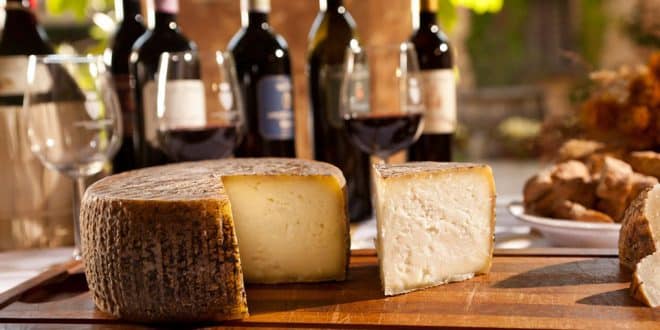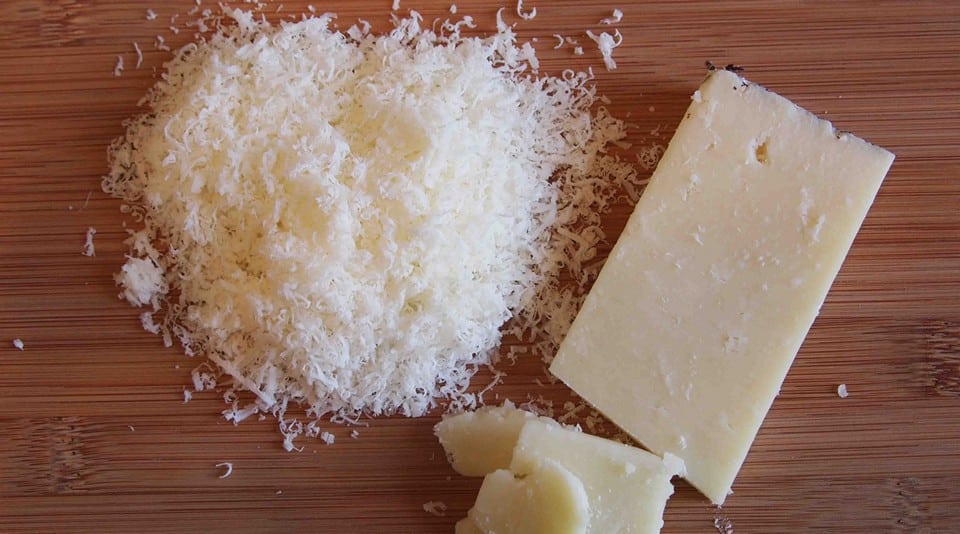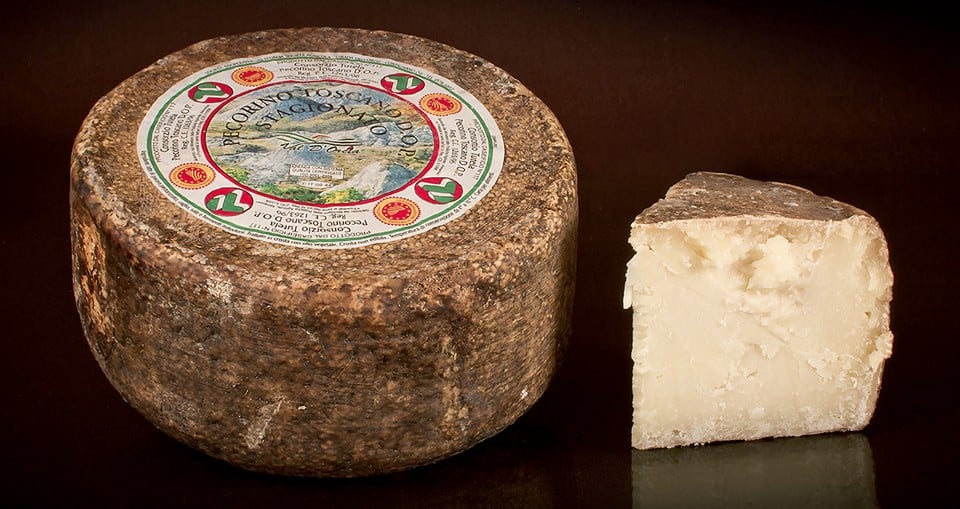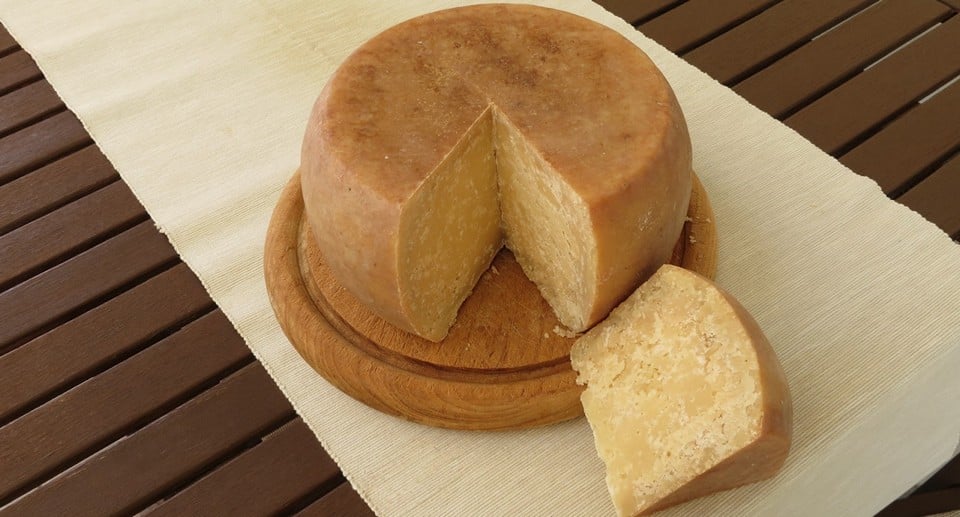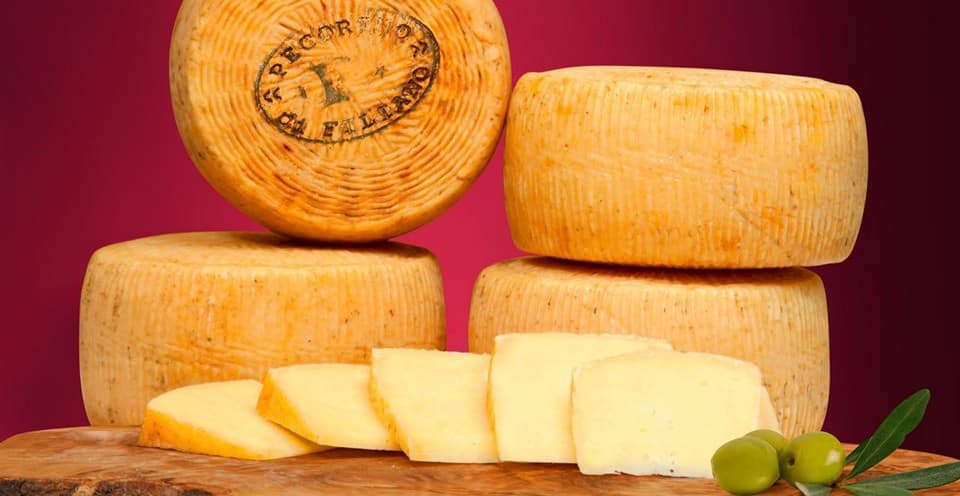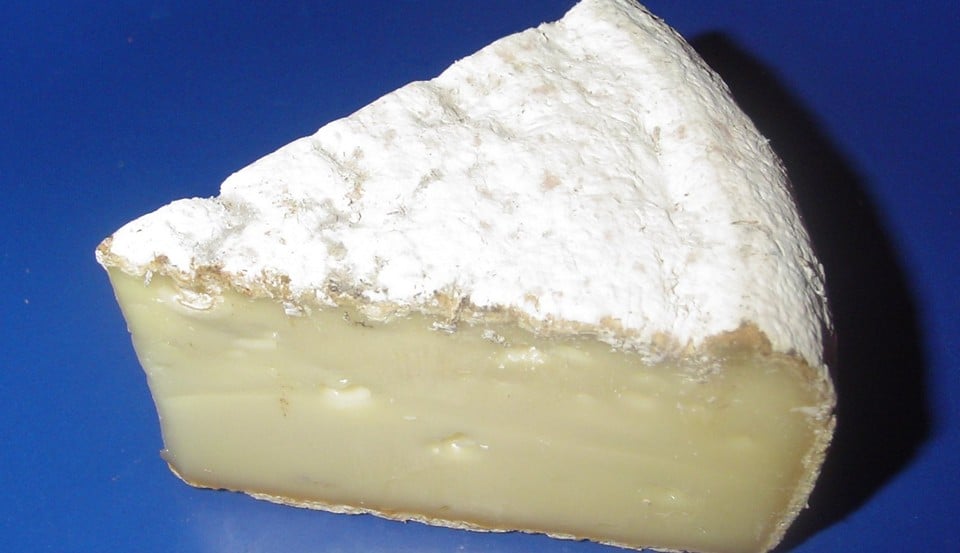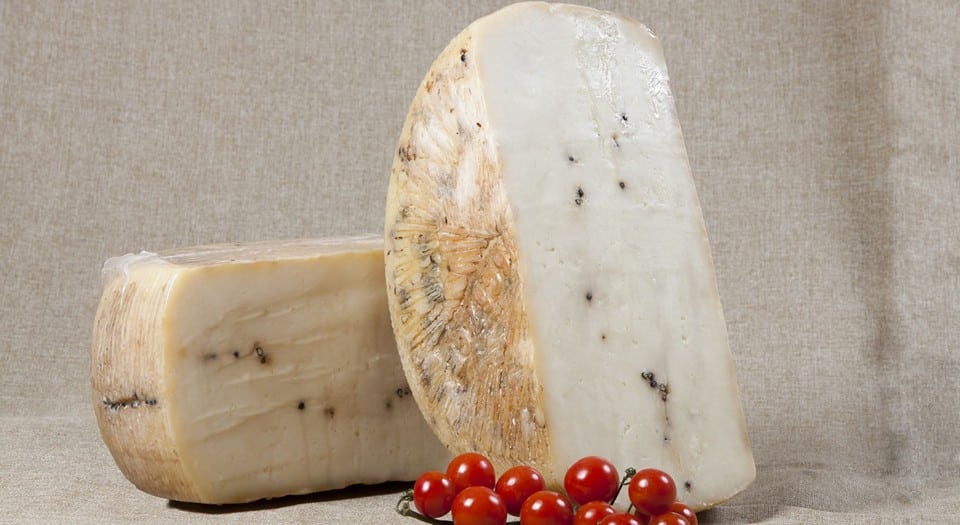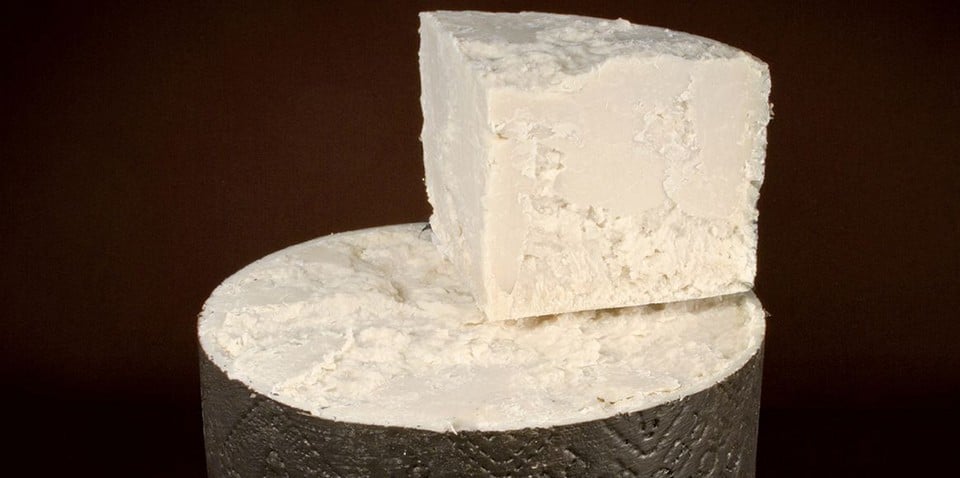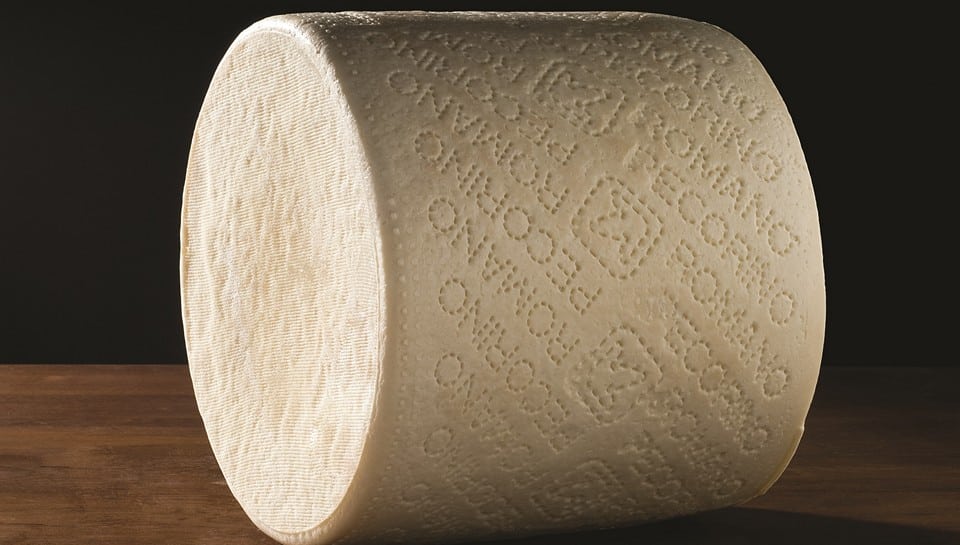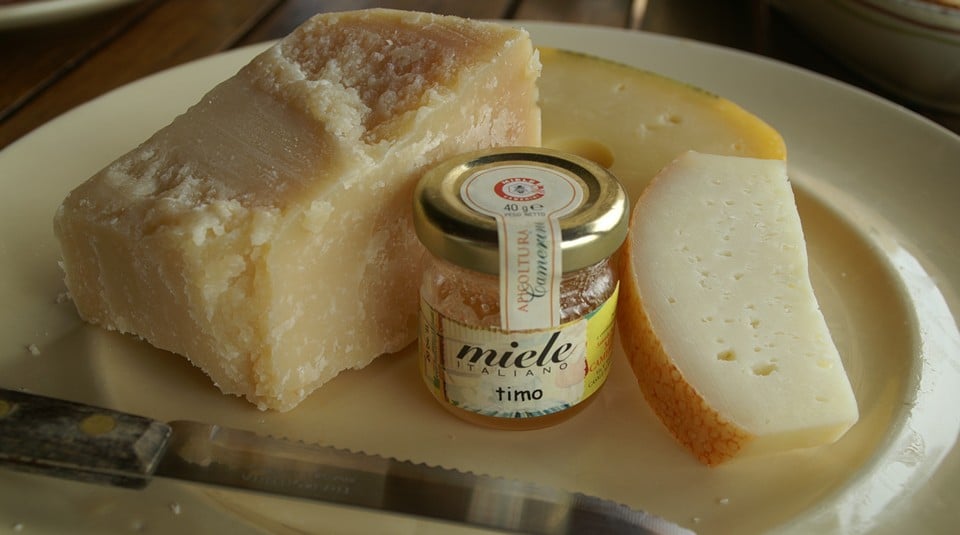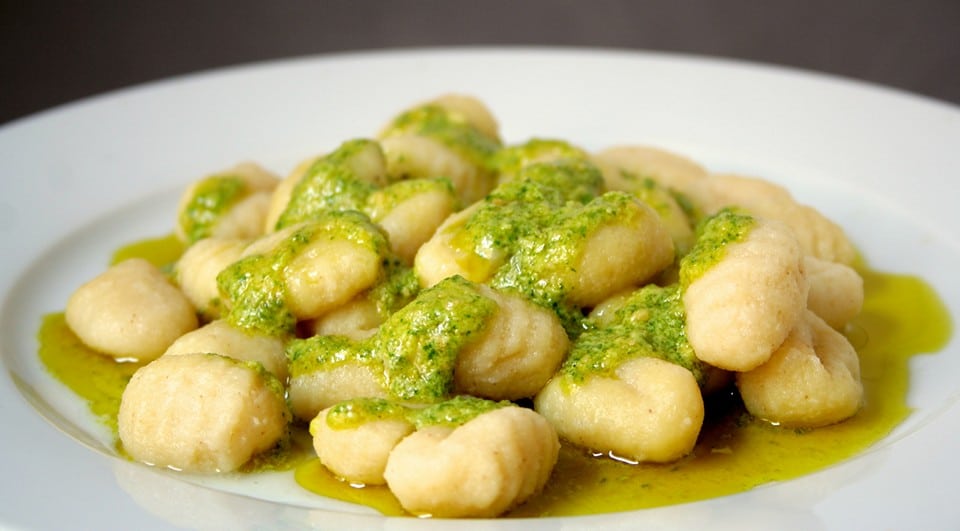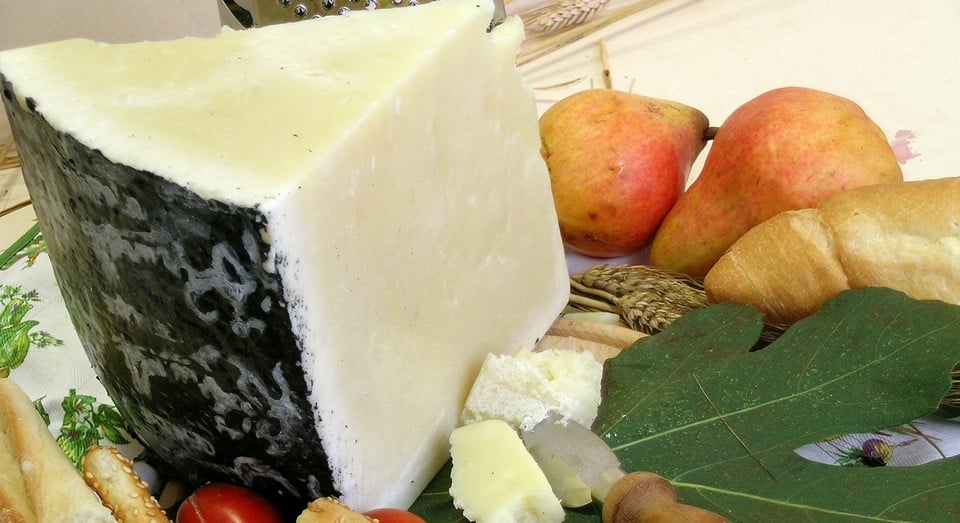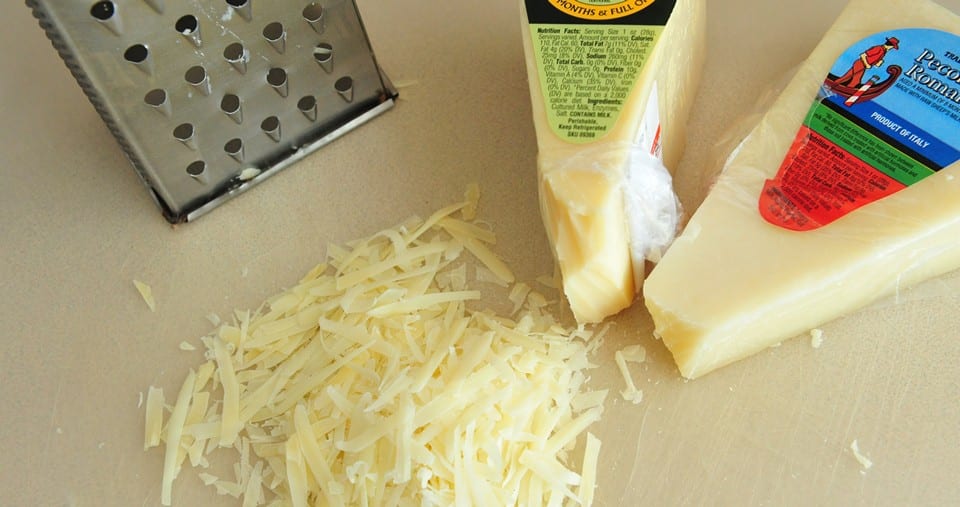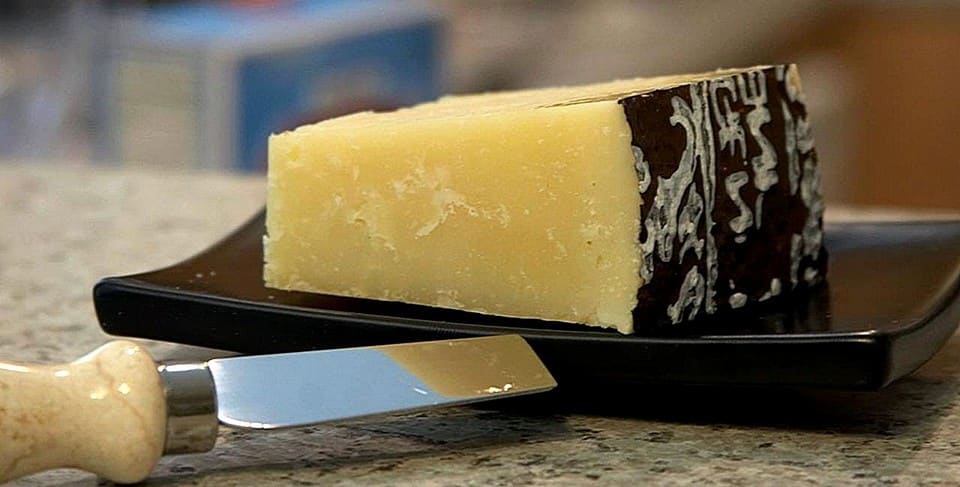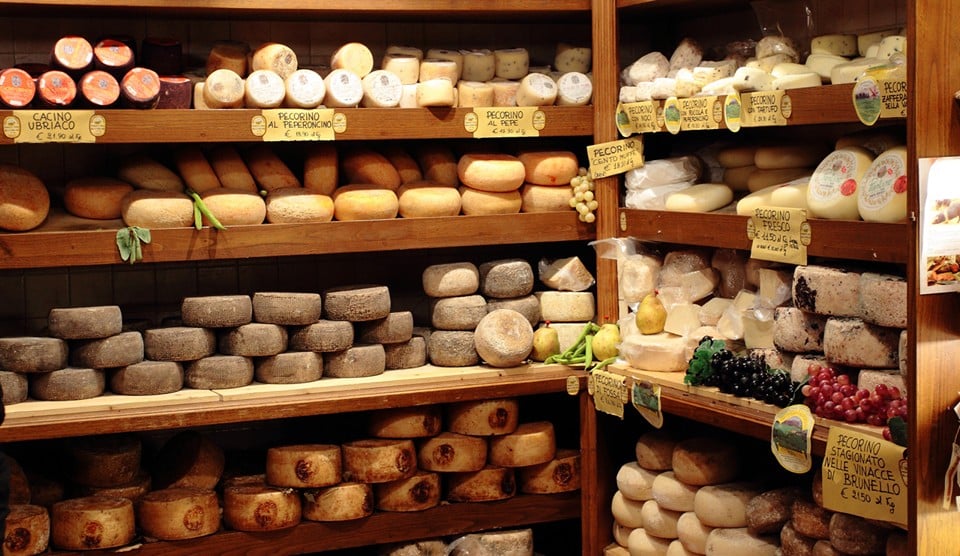Pecorino! The name alone seems to hold a piece of Italy within it! This time, we’re not talking about a singular cheese, but rather a whole family of Italian cheeses made from sheep’s milk. Its moniker finds its roots in the word “pecora,” meaning “sheep.” A whole eight variations of Pecorino have been classified under the DOP category. Of course, getting acquainted with the entire extensive family is no easy task. However, learning about the life of its most vibrant member, Pecorino Romano, will be exceptionally interesting.
Page Contents
DOP Varieties
There are numerous varieties of Pecorino produced across 12 regions in Italy: Tuscany (Toscana), Abruzzo, Emilia-Romagna, Umbria, Marche, Lazio, Campania, Apulia (Puglia), Basilicata, Sardinia (Sardegna), Calabria, and Sicily (Sicilia).
Despite the fact that only eight of these varieties have protected designation of origin, the remaining members of the family are nevertheless included in the list of “Traditional Italian Products” developed by Italy’s Ministry of Agriculture and Forestry. The production of these cheeses is also regulated.
So, which varieties are classified under the DOP category?
Pecorino Romano
Pecorino Romano is a hard cheese made from sheep’s milk, produced in Sardinia, Lazio, and the province of Grosseto.
The entire processing process, starting from sheep breeding and even the production of rennet, must take place within the production area. The form of the cheese is cylindrical with flat faces 9.8-13.8 inches (25-35 cm) in diameter and 9.8-15.7 inches (25-40 cm) high. The weight can range from 55.1 to 66.1 lbs (25 to 30 kg). The texture is dense with a small number of holes, the color is light yellow. The taste is salty, fragrant, spicy, slightly sharp.
Pecorino Toscano
Pecorino Toscano is a semi-hard cheese from the regions of Lazio, Tuscany, Umbria.
The cheese is cylindrical in shape with flat faces 5.9-8.6 inches (15-22 cm) in diameter, 2.7-4.3 inches (7-11 cm) in height. The mass of one cheese head ranges from 1.65 lbs to 7.7 lbs (750 g to 3.5 kg). The body of the cheese is tender, light yellow. The color of the crust depends on its treatment and can be either black or reddish. The taste is soft with a bright aroma.
Pecorino Sardo
Pecorino Sardo is the only cheese native to Sardinia that falls into the category of products with a protected name.
It comes in two variants that differ in maturation time: sweet (Dolce) and mature (Maturo). Sweet cheese is aged from 20 to 60 days. It has a cylindrical shape with flat faces and slightly convex sides. The mass of the head ranges from 2.2 to 5 lbs (1 to 2.3 kg). The crust is smooth, thin, pale-straw. The body of the cheese is soft, white in color. The taste is sweet, aromatic, has a slight sourness. Mature cheese is aged for more than 2 months. Cheese heads weighing from 3.7 to 8.8 lbs (1.7 to 4 kg) are cylindrical in shape. The crust is smooth, the color of the mass ranges from straw to brown (it darkens with age). It has a distinctly spicy taste. The variants are distinguished by the color of the label: green for Dolce and blue for Maturo.
Pecorino di Filiano
Pecorino di Filiano is a type of hard cheese, made from raw milk in the province of Potenza.
It has a cylindrical shape with slightly convex sides, measuring 5.9-11.8 inches (15-30 cm) in diameter and 3.1-7.1 inches (8-18 cm) in height. The cheese wheel weights 5.5-11 lbs (2.5-5 kg). The aging period is at least 180 days. The rind ranges from golden yellow to dark brown (depending on age), and has shallow grooves from the basket in which the cheese matures. The cheese body is dense, from white to straw color, with small, unevenly distributed holes. The taste is sweet, tender, and becomes slightly spicy in more mature cheeses.
Pecorino Crotonese
Pecorino Crotonese is a hard, semi-cooked sheep’s cheese, originating from the province of Crotone.
Currently, it is also produced in the Calabrian provinces of Catanzaro and Cosenza. It comes in three varieties: Fresco (fresh) with an aging period of less than 2 months, Semiduro (semi-hard) – from 2 to 3 months, and Stagionato (aged) – more than six months. Fresco has a thin rind of white or light yellow color. The body is soft, smooth, milky white with a small number of holes. The taste is soft, slightly tangy. Semiduro has a thick, pale brown surface. The consistency is resilient with rare holes. The taste is intense, harmonious. Stagionato has a hard, brown top. The body is straw-colored. The taste is intense, spicy. The Crotonese cheese wheels are cylindrical with flat faces and weigh from 1.1 to 11 lbs (0.5 to 5 kg). The mass of mature cheese reaches 22 lbs (10 kg). The height of the cylinders varies from 2.4 to 7.9 inches (6 to 20 cm), the diameter – from 3.9 to 11.8 inches (10 to 30 cm) (the sizes depend on the weight of the wheel).
Pecorino di Picinisco
Pecorino di Picinisco is a cheese made from unpasteurized sheep’s milk, produced in Lazio.
The wheels are cylindrical with flat faces, measuring 4.7-9.8 inches (12-25 cm) in diameter, 2.7-4.7 inches (7-12 cm) in height, and weigh 1.5-5.5 lbs (0.7-2.5 kg). It comes in two variations: Scamosciato (literally “Suede”) and Stagionato (aged). Scamosciato (maturity 30-60 days) has a thin, wrinkled, straw-yellow rind. The cheese body is resilient with a small number of holes. The taste is sweet with a pronounced aroma of alpine pastures. Stagionato (aged more than 90 days) has a wrinkled yellow surface and a straw-yellow, resilient body. The taste is brightly expressed, saturated, spicy.
Pecorino Siciliano
Pecorino Siciliano, or Sicilian Pecorino, is a product made from sheep’s milk in Sicily.
It is the oldest cheese on the island. The cheese is semi-hard, yellow in color, and has a cylindrical shape with slightly concave bases. The cheese body is resilient with a small number of holes. The more fatty fluid that leaks from the holes during slicing, the higher the fat content of the cheese. The taste is pleasant, spicy, slightly salty, and becomes stronger with age.
Pecorino delle Balze Volterrane
Pecorino delle Balze Volterrane is a relatively young addition to the list of products with a Protected Designation of Origin (DOP, granted in February 2015) from the Tuscany region.
Vegetable rennet is used in its production, which gives the cheese floral and plant notes. The maturation period lasts from 2 months. The shape of the cheese is cylindrical with convex sides (diameter 2-6 inches (5-15 cm), weight 1.3-4.4 lbs (0.6-2 kg)). The color of the rind ranges from pale yellow to straw. The texture is crumbly with unevenly distributed holes. The taste is spicy, intense.
All the cheeses differ not only in minor differences in their production technology but also in their unique, incomparable tastes. Each pecorino gets its characteristic aroma from several factors: the diversity of the pastures, the climatic conditions of the territory, and the traditions of preparation. However, the most common and deeply loved type is Pecorino Romano. We will tell our story about it.
Pecorino Romano Cheese History
Few cheeses in the world can boast such an ancient history as Pecorino Romano. The first evidence of it dates back to the Roman Empire. Famous authors such as Pliny the Elder, Marcus Terentius Varro, and Virgil mentioned it. In his treatise “De re rustica,” Lucius Junius Columella provides a detailed description of the technology for processing sheep’s milk.
Pecorino was an integral guest at the feasts in the imperial palace. Its ability for long storage and high nutritional value made it the main food product of Roman soldiers. A piece of cheese weighing 27 grams was served to the legionnaires as an addition to bread and soup.
Despite the fact that the birthplace of Pecorino Romano is the Lazio region (Romano means “Roman”), most of the manufacturers are now located in Sardinia. Of the 270,000 tons of cheese produced annually, 250,000 (95%) are made by Sardinian factories. This happened after the mayor of Rome legally banned its production within the city in 1884. This forced cheese suppliers to move their dairies to the island. Due to the growing popularity of Pecorino Romano, many small private cooperatives have been opened there for its production, besides the large factories. Later, the producers won a court case against the banning Roman law, but most of them did not return there.
In 1951, after a conference in Stresa, Pecorino Romano was classified as a product with a controlled designation of origin (DOC). Only Sardinian factories agreed to make cheese according to strict rules. At present, there are only two major companies in the Lazio region that have preserved the ancient Roman cheese-making traditions. One of them is the Brunelli company, which holds leading positions in the Pecorino market.
In 1979, at the request of producers from Sardinia and Lazio, the Consortium for the Protection of Pecorino Romano Cheese was convened to supervise its production. And in 1996, the cheese received the status of a product with a Protected Designation of Origin (PDO).
An interesting fact is that in the 2014-2015 Italian football championship, the “Pecorino Romano” logo adorned the shirts of the Cagliari club.
How Pecorino is Made in Production
Today, the original Pecorino Romano is produced only in three regions: Lazio, Sardinia, and Tuscany. Most of the manufacturing process still occurs by hand.
Fresh milk, obtained from sheep grazing in the production areas, is transported to the dairies in refrigerated installations under careful control. The raw material undergoes heat treatment, but the temperature should not exceed 68 degrees, and the time should not exceed 15 seconds.
The “scotta innesto” starter culture, which is prepared daily, is poured into vats with milk. It is one of the characteristic components of Pecorino Romano and consists of a group of thermophilic lactic acid bacteria.
Then, rennet, obtained from a lamb, is added to the milk, and it is heated to a temperature of 38-40 degrees for coagulation. When a dense curd-like clot forms, the cheesemaker breaks it into particles the size of a grain of wheat. It is worth noting that the achievement of the optimal moment for this procedure is not regulated by time, but is determined by the master visually. Then, the cheese is cooked at a temperature not exceeding 48 degrees.
The resulting clot is placed in press molds for whey to drain. For several days, the cheese matures in warm and humid rooms to stimulate the souring of the cheese dough. Then it is cooled and marked, punching out with matrices: the name, logo (a stylized sheep’s head), the manufacturer’s abbreviation, and the manufacturing date. Salting is carried out by both the ancient dry method and immersion in brine, and lasts for about 70 days in rooms with high humidity and at a temperature of 12 degrees.
Further maturation takes place in less humid rooms at 10 degrees. The aging continues for at least 5 months. After 8 months, Pecorino Romano can be sold in grated form.
U.S. manufacturers produce “Romano cheese”, but it should not be confused with the original Pecorino Romano. The DOP category product is produced only within Italy.
What Can Replace Pecorino Cheese and How to Eat it Properly
Due to its relatively strong salinity, Pecorino Romano is often eaten as a component of a dish. This distinguishes it from varieties such as Toscano and Sardo, which are consumed on their own or as part of sandwiches.
Italian housewives often replace Parmesan in recipes with Pecorino Romano, reducing the amount of salt in the process. It performs excellently in a grated form in soups, salads, and pasta. It is used to season stewed or baked vegetables.
Recently, the combination of salty and sweet has become popular, not only among gourmets but also among ordinary consumers. If you prefer this taste variation, you will get an indescribable pleasure trying Pecorino Romano with honey, pears, or chocolate.
The cheese is a wonderful aperitif for both young wines (Velletri, Cesanese Piglio), and mature dry varieties (Brunello di Montalcino, Carignano del Sulcis). It also pairs well with light beer.
Pecorino Romano should be stored in the refrigerator in a vacuum container or tightly wrapped in plastic wrap. If you plan to eat the cheese on its own as part of a cheese plate, it should be taken out of the refrigerator at least 1 hour in advance. This way, it will fully reveal its taste qualities.
Now, let’s add an unusual recipe to your collection, using ordinary ingredients.
Gnocchi made from semolina recipe
Gnocchi is the Italian version of Russian dumplings. Everything you need for them is usually found in every housewife’s cupboards:
- Semolina 250 g;
- Milk 1 l;
- Butter 70 g;
- Egg yolks 3 pcs;
- Pecorino Romano 100 g;
- Salt, pepper, nutmeg, vegetable oil (ideally olive) to taste.
Preparation:
In a suitable saucepan, heat the milk with salt and pepper. As soon as it boils, add the semolina and stir vigorously to avoid lump formation. Cook, continuing to stir, for 3-4 minutes until the usual readiness of the porridge. Remove from heat and let it cool slightly. Then add the yolks, half of the butter, nutmeg, ¼ part of the grated Pecorino Romano and mix thoroughly.
Form balls from the warm dough. Put them on a baking sheet greased with vegetable oil. Drip a few drops of oil on each gnocchi and press the balls to a thickness of 0.5 cm. Let them cool completely, sprinkle with the remaining cheese and grated butter. Bake in the oven at 200 degrees for 5 minutes. Tomato ketchup will work great as a sauce for semolina gnocchi.
You can certainly replace Pecorino Romano in recipes, but you can’t help but lose the dish’s flavor twist. As an alternative, chefs outside Italy can choose:
- Parmesan substitute;
- Sheep’s milk cheese (to preserve the beneficial properties of Pecorino);
Pecorino Caloric Content and Health Benefits
The calorie content and health benefits of Pecorino Romano are primarily determined by the use of sheep’s milk in its preparation.
100 grams of the cheese contains:
- 392 kcal;
- Proteins 25.8 g;
- Fats 32 g;
- Carbohydrates 0.2 g;
- Cholesterol 93 mg;
- Calcium 1162 mg (75% of the daily requirement);
- Sodium 1800 mg;
- Potassium 90 mg;
- Phosphorus 590 mg.
The high protein content (the main building material of the body) makes Pecorino Romano an indispensable part of the diet for athletes, teenagers, and pregnant women.
Although the fat content in the cheese is quite large, it should be noted that the level of unsaturated lipids in it is much higher than in products made from cow’s milk.
Studies of Pecorino Romano have demonstrated the specific action of conjugated linoleic acid, which is present in the product in large quantities. They proved that daily consumption of Pecorino:
- Prevents the formation of skin, breast, and stomach cancer;
- Reduces body mass index;
- Reduces the risk of cardiovascular diseases;
- Increases immune defense.
Calcium and phosphorus are important elements for the healthy state of bones and teeth. Calcium is involved in the proper functioning of nerves, muscles, and blood clotting processes. Potassium, which is part of the cheese, normalizes heart function.
Pecorino is rich in vitamins A and E, which have powerful antioxidant activity, fight against signs of aging, skin and eye diseases.
Vitamin D, found in sheep’s cheese, is involved in the absorption of calcium and phosphorus, prevents type 2 diabetes, heart failure, and lowers blood pressure.
In addition to the listed substances, Pecorino Romano contains vitamin C and B vitamins, which are involved in the functioning of most systems of the body.
However, despite these health benefits, it is not advisable to overindulge in Pecorino Romano. Due to its high fat and salt content, people with cholesterol problems and high blood pressure should be particularly careful. The daily portion in a healthy diet is 30-40 g.
Price of Pecorino in Italy
Traveling to Italy, you will easily find this favorite and healthy cheese in many cheese boutiques.
The use of sheep’s milk inherently makes Pecorino Romano quite an expensive cheese. However, its uniqueness and benefits are a reason to splurge on it at least once in a lifetime.
You can buy the cheese in its home country at a price ranging from 16 to 30 euros per 1 kg of Pecorino Romano DOP.
FAQ about Pecorino
What does Pecorino cheese taste like?
What is Pecorino cheese made from?
How long does Pecorino cheese last?
What is Pecorino cheese similar to?
Is Pecorino cheese healthy?
How to cut Pecorino cheese?
What is the best Pecorino cheese?
Is Pecorino cheese the same as Pecorino Romano?
Seven interesting facts about Pecorino
Read and memorize exciting facts about Italian Pecorino Cheese to surprise your friends during your meal:
- Pecorino cheese, with its name derived from “Pecora,” meaning sheep in Italian, is traditionally made from 100% sheep’s milk. Originating in Central Italy, specifically in regions of Tuscany, Sardinia, Lazio, and Umbria, it has been a staple of Italian cuisine for over 2,000 years. Archaeological finds dating back to the Bronze Age indicate the production of Pecorino as far back as 2,000 BC!
- Unlike many cheeses, Pecorino comes in a variety of aging stages, each offering a unique taste and texture. For instance, Pecorino Romano, aged for eight months to a year, is hard and salty, perfect for grating over pasta. Pecorino Sardo, aged for only 20 to 60 days, is much softer and ideal for slicing.
- Pecorino Romano, the most famous type of Pecorino cheese, played a critical role in feeding the Roman Legions. Due to its long shelf life and high protein content, this cheese was a staple food for Roman soldiers during their long campaigns. Ancient records from as early as the 1st Century BC mention Pecorino Romano.
- In 1884, the first cheese cooperative was formed in Lazio, Italy, to produce Pecorino Romano. Today, it’s one of Italy’s most exported cheeses, with production numbers reaching over 24,000 tons annually.
- Each Pecorino variety holds a Protected Designation of Origin (PDO) status in the European Union. This status means that only those cheeses produced in certain regions using specific methods and ingredients can legally be called “Pecorino.”
- Sagra del Pecorino, a festival in honor of Pecorino, is held annually in the Italian town of Cuglieri, Sardinia, on the last Sunday of May. This event, full of tastings, demonstrations, and local folklore, attracts thousands of cheese lovers from around the world.
- Pecorino has a very high mineral content, especially calcium, and phosphorus, much higher than other cheeses. Just a small serving (1 oz) of Pecorino Romano can provide about 20% of the daily recommended intake of calcium. It’s not only a delicious cheese but also a healthy addition to a balanced diet.
With this, our exciting talk about Pecorino comes to an end. We hope that, while scrolling through this page with one hand, you are already packing your suitcase for a trip to Italy with the other. Eat healthily, live honestly, travel without restrictions, and remember: “Every cloud has a silver lining, and no Pecorino without sheep!”
 Italy for me From Italy with love
Italy for me From Italy with love

